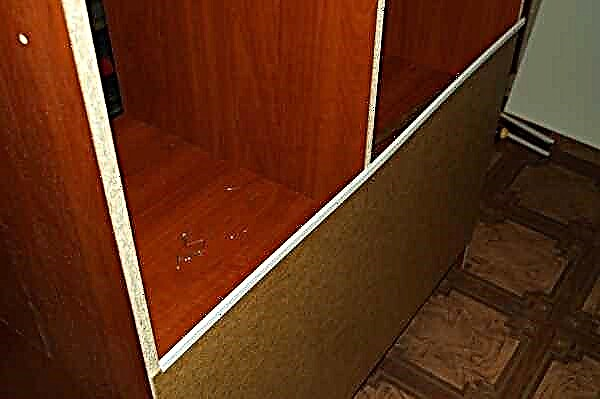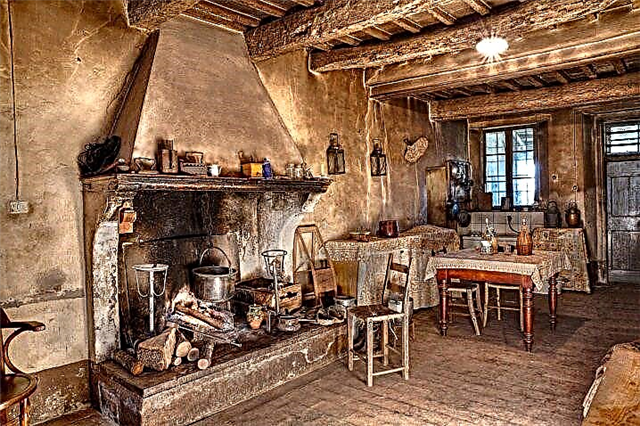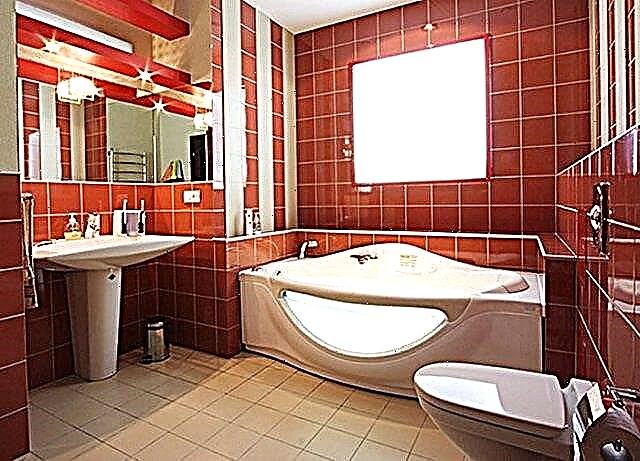The economic benefits of powder paint
- economical due to the low percentage of waste,
- almost 100% of the paint is transferred to the work surface,
- with an excessive amount of paint that does not settle on the surface to be painted during the spraying process, it can be used again,
- the technology is highly automated, which provides ease in training workers without the need for maintenance of the coating,
- minimal loss of material during painting (1-4%),
- about 95% of the paint collected during the cleaning process of the equipment can be reused, therefore, the disposal of powder paints is very high,
- due to the absence of solvents, neither the time for its evaporation nor the cost of vapor removal are required.
Environmental Benefits of Powder Paint
- does not contain harmful organic compounds,
- the technology is environmentally friendly
- reduced risk of fire,
- minimal chemical odor,
- the technology improves sanitary-hygienic working conditions,
- the concentration of volatile substances released during the polymerization never reaches the maximum permissible norm.
The main advantages of powder coatings compared with solvent paints
- excellent decorative and physico-chemical properties of polymer coatings, unattainable with traditional painting methods,
- higher quality polymer coatings and better performance properties are achieved,
- coating products without primer surface
- due to the 100% dry matter content, the powder coating is applied in a single layer, unlike expensive multi-layer liquid coatings,
- the porosity in the powder coating is much less. Most polymer powder paints have improved anti-corrosion and impact-resistant properties compared to conventional paints,
- powder coating does not require special preparation or viscosity control, since powder paints are delivered to the consumer in a ready-to-use form,
- losses in powder coating are only 1-4%, while losses in liquid painting are about 40%,
- hardening of the powder polymer coating occurs within only 30 minutes,
- powder paints do not need large storage facilities for storage,
- the high strength of the powder coating minimizes damage to painted products during transportation, in addition, reduces packaging costs.
Possible disadvantages of powder coating
- during the coloring process, a separate container is required for each color,
- precise control of the painting process is necessary to prevent the possibility of an explosion,
- it may be difficult to apply a very thin coat of paint,
- difficulties with painting at low temperatures are possible,
- certain restrictions in use, for example, with non-standard forms of objects or prefabricated structures.
EQUIPMENT FOR APPLICATION OF POWDER PAINTS IN BELARUS, POWDER PAINT. FOR ALL QUESTIONS CONTACT US, WE WILL HELP YOU HELP!
Characteristics and applications of powder coat
Powder paint is a liquid composition based on polymer resins with hardeners and flow modifiers. Pigments added for color. The processing temperature in the chamber is 200–250 degrees. Powder coating technology is used for products that can withstand without deformation the temperature at which the coating bakes.
The most widespread technology has received:

- in the industrial production of metal products,
- in metallurgy,
- in the production of building materials.
Glass, ceramics, MDF are also stained by this method.
Powder paint covers a wide segment of goods and structures, including:
- furniture, household appliances,
- medical instruments, equipment,
- Sports Equipment,
- sheet metal, aluminum profiles.
The main advantages and disadvantages of powder coating
Powder coating protects the surface well. The paint lays in a dense layer, 35–250 μm thick, the number of pores is less. One coat replaces 2–3 layers of regular paint. Smooth, durable coating film does not scratch, is not damaged during transportation.
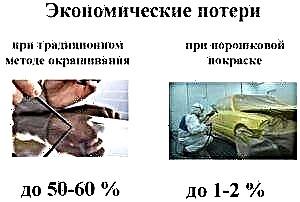
The technology of work allows you to collect paint sprayed in the air for reuse. Loss of the coloring composition is minimized, amounting to 1-4% of the total mass. The process of painting the metal is simple, easy, does not require a large number of workers. These factors reduce the cost of applying per square meter of construction.
Corrosion of the metal painted in this way is excluded. Metal products do not fade under sunlight, color, coating quality does not change in any weather conditions. A diverse palette has many shades, reproduces the complex texture of bronze, granite, silver. Gloss varies from matte to gloss.
Powder paint supplied by the manufacturer is already ready for use, the solvent is not used. Powder coated parts are not primed.
The disadvantages of powder coating include:

- the composition is not tinted, the choice comes from the finished palette of shades,
- impossibility to apply manually, only in workshop conditions on special equipment,
- in case of a defect in metal painting, it is impossible to fix a separate area, the part is completely repainted,
- the material of the metal part must withstand 200–250 degrees, which is not always possible,
- the dimensions of the parts depend on the dimensions of the polymerization chamber.
Powder coating
Metal painting takes place in three stages. Powder paint is applied to the prepared surface. After spraying the coloring composition, the part is sent to the polymerization furnace.
For painting, the following equipment is required:

- Application chamber. Equipped with air suction for collecting paint, returning it or recycling.
- Air spray gun. Together with the feeder, it forms a tool for applying powder painting.
- Feeder.
- Polymerization chamber. Creates a temperature sufficient to complete the process.
The installation, consisting of a spray gun and a feeder, creates a mixture of the coloring matter with air, forms a torch, gives an electric charge to the paint particles. The shape of the torch depends on the installed nozzle of the gun. Charged particles settling on the workpiece are held by the force of electric attraction.
Existing Blending Methods
Methods of application according to the type of obtaining particles of a charge are called electrostatic and tribostatic.
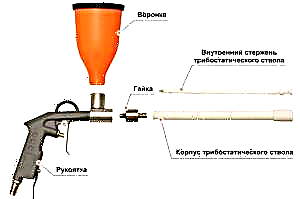
The electrostatic method charges the charge with a corona electrode at a high voltage of 20–100 thousand V. Electrostatic installations are more powerful, productive. By reducing the voltage of the electrode increases the speed of the air stream.
The tribostatic effect is achieved by friction of the particles against each other and the material of the gun body. The body of the gun to increase friction is made of fluoroplastic.
Tribostatic plants are cheaper, the performance of units is less than that of electrostatic ones. The percentage of sedimentation of particles on the part below. Not all paints for metal are designed for charging by friction, you need to choose special ones or use adaptive additives. Parts of the gun wear out and require replacement. In a tribostatic way, it is more convenient to process parts of complex shape, grooves, and indentations. The electrostatic method in such conditions is not effective, it leaves unproductive.
The composition of the resins of the mixture is divided into three categories:
- epoxy paints
- epoxy polyester compositions,
- polyester paints.
Powder Paint Properties

Liquid colorants are known and familiar to everyone, in this article we will talk about powder paint, which, due to its unique and high-tech properties, will most likely occupy a leading role in paint and varnish coatings in the near future, because it is the fastest growing segment of the paint and varnish industry worldwide.
For the first time, powder paint began to be put into practice in the 60s of the last century, constantly developing and improving the technology. Initially, her concept was based on coating metals with dry paints, which were then melted, forming a uniform coloration of the entire object. The use of thermoplastic paints began, but for several decades they have been preferring thermoset paints, which have increased resistance and durability and have wider application.
There is no solvent in powder paint, and this is an additional plus for consumers.
Its application, especially for a large number of products, is more economical than using liquid paint. The application of powder paint is carried out using the electrostatic method and further firing, and practically does not affect the ecology of the environment.
Characteristics of powder paint

As you know, powder paint is a solid multicomponent composition in which the role of a dispersed medium is played not by solvents and water, but by air. Despite the fact that the so-called “dry residue” of the composition is very close in composition to the composition of liquid paint, their properties have significant differences. And it is precisely the air dispersed medium that allows this type of paint and varnish materials to be more effective than traditional coatings - this is manifested in economic, technical, and, not least, environmental characteristics. Even storing and transporting such paint is much easier, since there is no need to use special sealed containers with a rigid locking position.
The film-forming properties of powder paint are achieved thanks to the solid particles included in its composition, as well as special film-forming resins, hardeners and fillers, which together with the target additives form a solid dispersed composition. Depending on the presence of special coloring pigments in the composition distinguish between systems:
Pigmented powder paint is higher in density, and is used more widely as a topcoat - depending on the color spectrum.
They are also called powder varnish - they are used for applying to a surface that must remain transparent, for example, for varnishing plastic and conductive products, as well as for varnishing wood products in the manufacture of furniture.
 Since the dispersed medium of powder paint is airborne and its main component is solid particles, this significantly distinguishes it from ordinary liquid paints, and therefore fundamentally different qualitative indicators are used for such solid powder compositions that are different from properties characteristic of liquid substances.
Since the dispersed medium of powder paint is airborne and its main component is solid particles, this significantly distinguishes it from ordinary liquid paints, and therefore fundamentally different qualitative indicators are used for such solid powder compositions that are different from properties characteristic of liquid substances.
The main property of powder paint is dispersion. Its composition should be homogeneous, physically and chemically stable, with an optimal particle size of about 50-100 microns. In order to comply with the fineness of the coating, the particle size should be no more than 300-330 microns.
The qualitative characteristics of the paint also depend on the degree of flowability of the composition and its hygroscopicity. When applying the composition to the surface, it is necessary to adhere to a special technique in order to comply with all the requirements for coating compositions, and for the necessary set of properties of the finished materials - for the formation of an effective coating, and for the thin layer of application. The traditionally used methods, such as spraying, dipping, applying with rollers and brushes, and the like, are absolutely unsuitable for applying powder paint; instead, they use technologically more modern methods, for example, spraying, aerosol, electrostatic and using a fluidized bed.
The composition of powder paints
 By chemical composition, there are such varieties as:
By chemical composition, there are such varieties as:
- Thermoplastic based paints
In thermoplastic paints there are no chemical transformations during application - the particles of the material, interacting with each other, are fused, and the melt is cooled. The film formers have thermoplasticity and solubility, and the composition remains similar to the starting material.
- Thermoset Paints
The technology of thermoset paints includes chemical transformations, giving the resulting coatings melting and insolubility and significantly changing the chemical component. To date, the proportion of thermoset paints is almost 80% of the total.
Polymers in powder paint
Depending on the names of the polymers or oligomers, paints with a different type of film former are released. This is for example:
- epoxy
- polyester
- polyvinyl chloride
- polyethylene
In the beginning, paints with epoxy were developed, and today they are used as actively, despite the presence of other types. They have excellent mechanical strength, good adhesion and are solvent resistant. The disadvantage of this material is yellowness upon overheating, it does not impair the protective characteristics, but spoils the appearance.
Polyester-based paints do not turn yellow; they are used for facades, cars, and other outdoor objects. Another distinguishing feature is that they are less solvent resistant.
And as regards the classification of the latter trait, then this includes paints for the manufacture of the following coatings:
- anti-friction
- electrical insulating
- weatherproof
- chemical resistant
Powder paints of any shade and shine are being produced. They can be high gloss and deep matt. There are also special paints, for example:
- front
- multicolor
- anticorrosive
- Metallic
- hammer
- high zinc
Powder paint application
 Unlike conventional liquid, the use of powder is extremely economical - when painting products with solvent-based paint, it takes three times more than when using airborne dispersion paint, and thanks to this, powder paint has become widespread in many areas.
Unlike conventional liquid, the use of powder is extremely economical - when painting products with solvent-based paint, it takes three times more than when using airborne dispersion paint, and thanks to this, powder paint has become widespread in many areas.
Its main advantage is that it can be used in the mass production of products, since the electrostatic method is easily applied to the surface of a large number of products.
Using special paint booths for applying powder paint, an aesthetic and high-strength coating is obtained - in this way, ceramic products, both wood, and glass and metal products, for example, aluminum and steel, and many others are painted. The cost-effectiveness of this method of application is added by the fact that excess paint can be collected back and used for application on the next batch of products.
When working with metal products, as a result of their electrical conductivity, the tribostatic method of applying paint is also effective, and you can get a high-quality coating on complex components and parts. Also, powder paint is successfully used for applying to products made of ceramics, glass and polymers. The polymer coating has the most aesthetic appearance and has the best protective layer.
Due to its high technology and the ability to form a coating layer uniform over the entire surface, powder paint is widely used in many industries, from coating electrical equipment, goods for sports, agricultural goods, and household appliances, to anticorrosion treatment of drill and reinforcing pipes and profiles, and use in automotive industry as a primer and for the treatment of various surfaces. And the possibility of using pigments in a wide range of colors, numbering more than three hundred shades, makes powder paint even more popular in the market of paint and varnish products.
Table. Scopes of powder paints.
| Type of powder paint | Benefits | disadvantages | Application area |
|---|---|---|---|
| Epoxy | High adhesion, mechanical strength and chemical resistance to moisture, alkalis, aliphatic and aromatic hydrocarbons, lubricating oils, fuels, crude oil. The range of operating temperatures is from –60 to +120 ° С. The dielectric properties of the coatings are quite high. | Low resistance to ultraviolet and, accordingly, poor outdoor resistance, low heat resistance, tendency to yellowing during curing | Corrosion protection of products exposed to chemical attack, as well as used indoors: - metal furniture, - household equipment |
| Epoxy Polyester | Relatively low price and good quality of the resulting coatings. Paints are prepared by combining an epoxy and polyester oligomer. The coatings have a beautiful appearance, good gloss and uniform color, are resistant to water, aqueous solutions of salts, diluted alkalis and acids | Compared with epoxy coating - reduced resistance to chemicals, the difficulty of obtaining matte coatings during low-temperature curing | Coloring of products used indoors: - metal furniture, - lighting equipment, - electric heating and household appliances, - various metal fittings |
| Polyester | Sufficiently high resistance to atmospheric factors, light resistance, mechanical and electrical strength, increased abrasion resistance. Improve the appearance of the product due to its high glossiness. Good adhesion to metals | Alkali and dielectric properties are slightly lower compared to epoxy and epoxy-polyester paints. | For painting products exposed to constant atmospheric factors: - facade panels - agricultural machinery, bicycles - air conditioning - other metal products and structures in the open air |
Epoxy powder paints
Epoxy paints and varnishes during their development have gained a good reputation and today are very popular among both specialists and ordinary people who do not face repair or construction work every day. Epoxy paints are those paints whose main component is epoxy.

New matte powder paints based on acrylic resins and nano-additives
The research project of scientists from the UK and Greece provides for the development of new advanced polymer-based raw materials and composite materials, as well as processing and manufacturing technologies for new powder paints.

Production of powder paints
As already known, paints have a long history, they are used widely and this benefits the person. The use of paints in everyday life was widespread not so long ago, but people immediately realized how much useful can be learned from them. It turned out that in addition to visual transformation, the painted surface or the subject of household utensils also last longer!
Powder paint structure
The composition and structural components of powder paint is a mixture of solid polymer particles and coloring pigments, for which the active medium is not a liquid solvent, but an air stream. And although the chemical components of the powder compositions are similar to the composition of liquid paints, in practice, their operational properties and characteristics differ.
The key point is the lack of a liquid fraction, which is due to:
- reduction of requirements for storage and transportation of powder paint,
- increased shelf life
- no harmful fumes,
- lack of combustible substances and fire hazard.
The basis of powder paints are polymers that provide adhesion to the surface and melting of the powder coating. In addition to the base, the composition of the mixture includes:
- fillers in the form of metal oxides, for example, titanium and aluminum,
- pigments responsible for the color characteristics of the paint,
- resin-based film former
- hardeners for epoxy
- esters of acrylic resins.
All components of powder paints have a dry fractional consistency, which is characterized by flowability and a long shelf life. Pigment and fillers account for about 50% of the total composition. Depending on the type and characteristics of the pigment, paints may vary in color and texture of the coating, the degree of electrification and adhesive performance.
The pigments used for powder formulations are completely identical to those used for traditional acrylic paints. Their number and the ratio in the composition is determined by the type of paint, its purpose and the final color. The color differs not only in gamut, but also in the depth of the shade, the presence or absence of metallic luster, as well as the texture of the coating.
Types and polymers used in powder paints
In addition to the two main categories that characterize the method of film formation, there are many types of powder paint according to the type of chemical base and purpose. By types of film-forming substances, paints are:
- epoxy - on a resin basis, are characterized by a high degree of strength, resistance to dissolution, good adhesion to the surface, but tend to turn yellow at high temperatures,
- polyester - have excellent aesthetic properties, maintain color purity, demonstrate resistance to atmospheric and mechanical influences, but are sensitive to chemical solvents,
- polyvinyl chloride - optimal paints for design and interior use in exterior and interior works, have good durability and a variety of color and texture palettes,
- polyethylene - are characterized by heat resistance, tolerate mechanical loads and have moisture repellent properties, ideal for painting pipeline communications,
- polyamide - a decorative category for interior decoration inside and outside buildings.
By purpose and degree of resistance, such categories as weather-resistant, anti-corrosion, zinc, electrical insulating and chemically resistant types of paints are also distinguished. With their help, they paint parts of mechanisms and equipment, supports and metal structures for external installation, as well as trunk pipelines, including underwater ones.
In addition, powder paint is available in certain categories for special applications, such as facade, texture, multi-color and with a metallic sheen. Using these colors, you can create various compositions, simulate materials and embody any design ideas. The color number, gloss and individual properties of the paint are specified by the manufacturer.
Epoxy powder coatings
Epoxy paints for metal are durable, resistant to chemicals, oil and fuel. A primer for them is not required, they themselves can be a primer layer before applying liquid powder coatings. The thickness of the applied layer is up to 500 microns.
Epoxy paint does not conduct electricity, because of its insulating properties it is in demand in the electrical, radio engineering industries when painting metal that requires enhanced anti-corrosion properties. Ferrous metals, galvanized steel phosphate, aluminum and aluminum alloys are chromated. An impact-resistant coating with good adhesion is formed.

Epoxy Polyester Powder Coatings
Epoxy-polyester coatings are more decorative. Based on them, you can get complex textures for embossed leather, the effects of an aged surface, a wide palette of metallic shades with varying degrees of gloss. A disadvantage of the epoxy-polyester coating is the reduced resistance to weathering and poor resistance to metal corrosion processes.

Polyester Powder Coatings
Polyester powder paints - weatherproof, mechanically strong, abrasion resistant coatings. High adhesion of the polyester compositions allows coating all types of metals, including light alloys. They isolate electricity well. Reacting with alkali, the paint layer is destroyed.
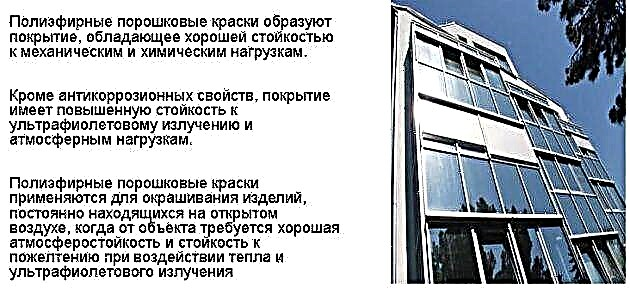
Features of powder coating technology and polymerization
The application of powder paint takes place in three stages:
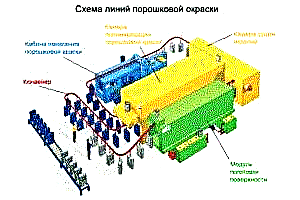
- Surface preparation. It includes the removal of contaminants and the application of additional conversion coatings to increase the protective properties and durability.
- Application of paint in the spray booth using the unit.
- Oven cure at high temperature.
Chemical degreasing of metal for painting is a must. Residues of oil, chemicals, or moisture can cause discoloration, punctures, or sinks. The workpiece is inspected for sharp edges, burrs, weld seams and metal brazing.
It is necessary to clean the surface of rust and dust. Giving additional properties by surface phosphating, chromating or passivation depends on the coating requirements.
The application chamber is equipped with a recovery system that returns microparticles to the feeder.

The hardening temperature of each type of paint is indicated by the manufacturer in the accompanying documents and, as a rule, is 180-200 degrees. The polymerization temperature is understood to mean the surface temperature of the workpiece, and not the temperature of the operating mode of the furnace.
Hardening of the paint in the polymerization chamber is recommended to be carried out at low temperatures and for long periods. This will increase hardness and avoid coating defects such as shagreen leather and sagging.
Massive metal products are recommended to be warmed up in advance, so that the period of stay of the part in the furnace is sufficient for final hardening. Dust in the room is not allowed. It is forbidden to transport a metal product with non-cooling paint.

